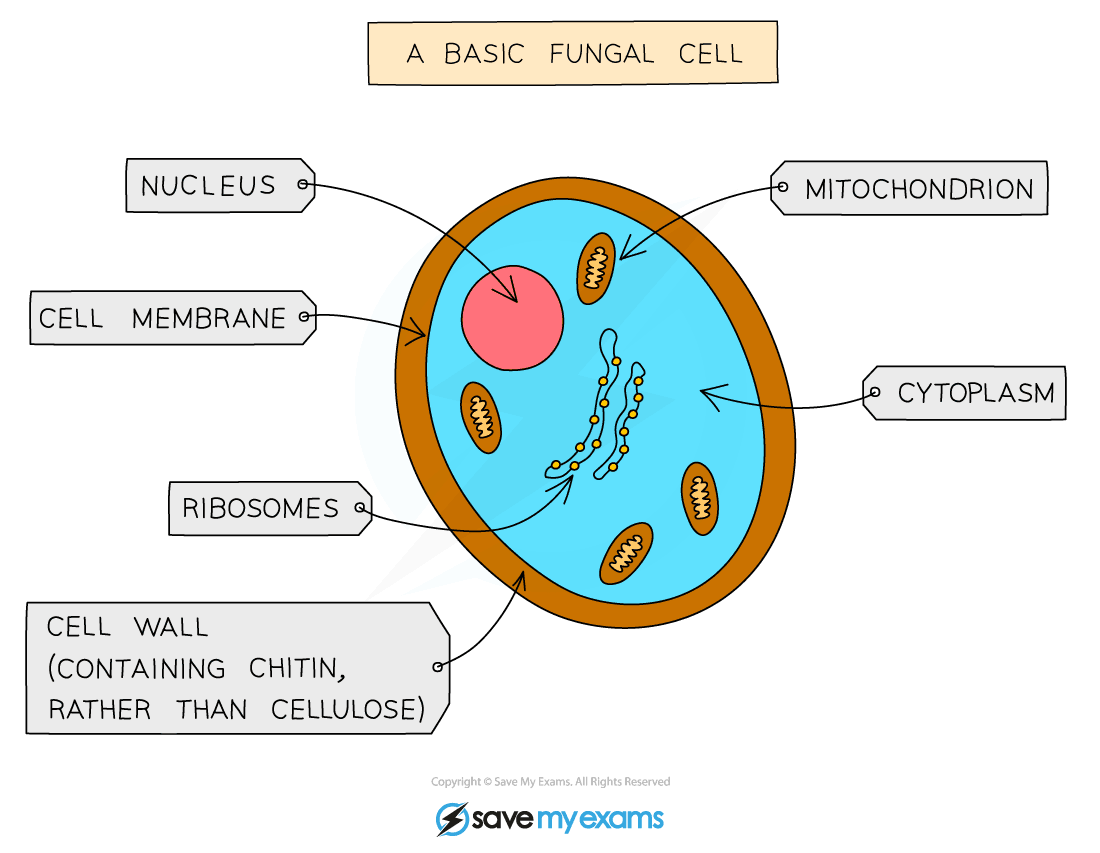Fungi
- Main features of fungi:
- They are usually multicellular but some are single-celled (e.g. yeast)
- Multicellular fungi are mainly made up of thread-like structures known as hyphae that contain many nuclei and are organised into a network known as a mycelium
- Their cells contain a nucleus with a distinct membrane
- Their cells have cell walls made of chitin (chitinous cell walls)
- Their cells do not contain chloroplasts (so they cannot carry out photosynthesis)
- They feed by secreting extracellular digestive enzymes (outside the mycelium) onto the food (usually decaying organic matter) and then absorbing the digested molecules. This method of feeding is known as saprotrophic nutrition
- Some fungi are parasitic and feed on living material
- Some fungi store carbohydrates as glycogen
- They do not have nervous coordination
- Examples of fungi include: moulds, mushrooms, yeasts

A typical fungal cell
The typical structure of a multicellular fungus e.g. Mucor (bread mould)
Protoctists
- Main features of protoctists:
- The protoctists are a very diverse kingdom of organisms that don’t really belong in any of the other eukaryotic kingdoms (animals, plants and fungi)
- They are mainly microscopic and single-celled but some aggregate (group together) into larger forms, such as colonies or chains of cells that form filaments
- Their cells contain a nucleus with a distinct membrane
- Some have features making them more like animal cells e.g. Plasmodium (the protoctist that causes malaria)
- Some have features, such as cell walls and chloroplasts, making them more like plant cells e.g. green algae, such as Chlorella
- This means some protoctists photosynthesise and some feed on organic substances made by other living things
- They do not have nervous coordination
- Examples of protoctists include: amoeba, Paramecium, Plasmodium, Chlorella
Two examples of protoctist cells
Exam Tip
You need to be able to recognise, draw and interpret images of cells, so practice drawing and labelling fungal cells and protoctist cells as part of your revision.


